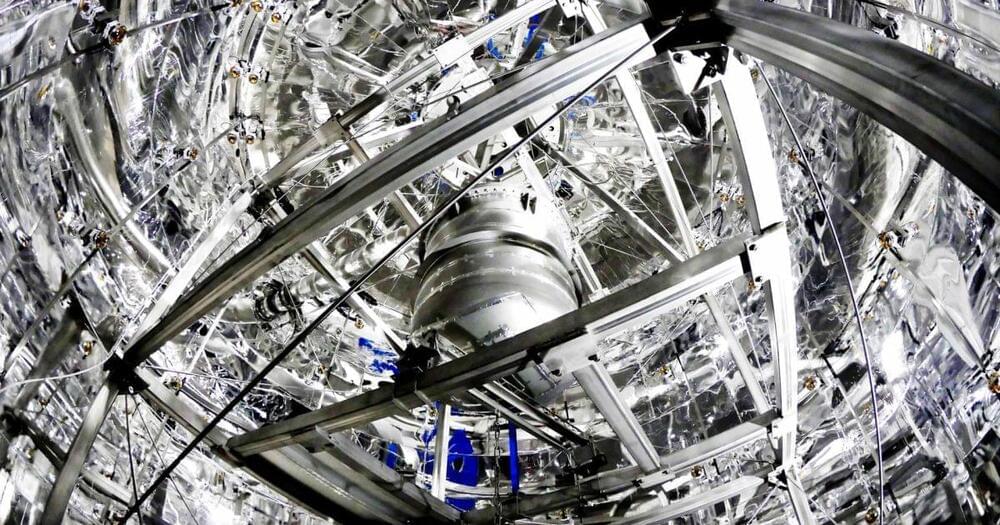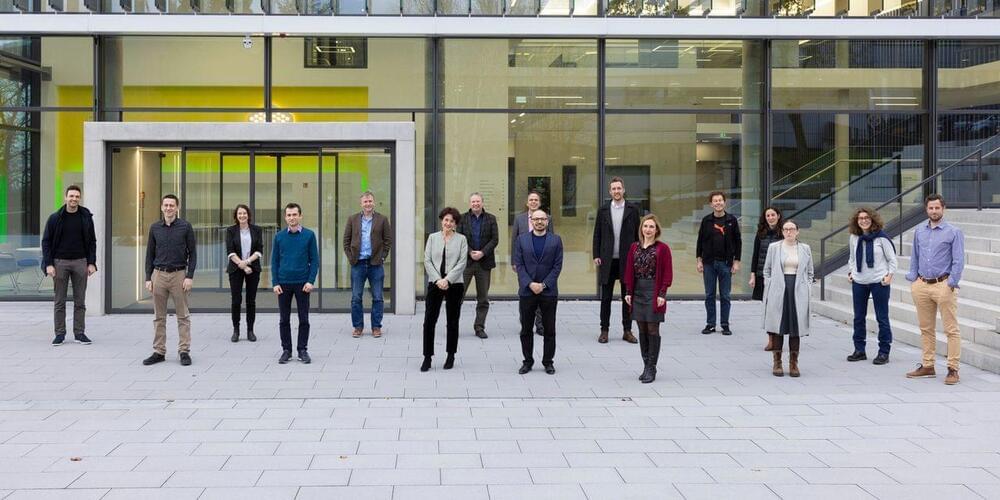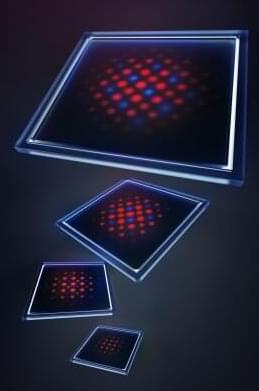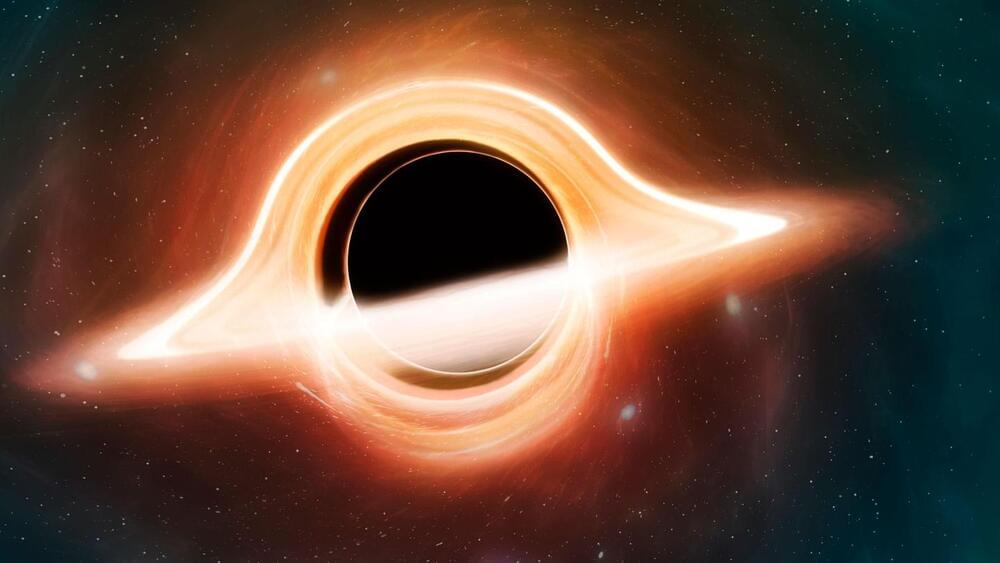With a bigger, better, and more sensitive detector than ever before, the XENON collaboration leaves little wiggle room for WIMP dark matter.



“AlphaFold was a huge advance in protein structure prediction. We were inspired by the advances they made, which led to a whole new wave of using deep learning,” said Professor David Baker, a biochemist and computational biologist at the University of Washington.
“The advantage of ESMFold is that it is very fast, and so can be used to predict the structures of a larger set of proteins than AlphaFold, albeit with slightly lower accuracy, similar to that of RoseTTAFold,” Dr. Baker said, referring to a tool that emerged from his lab in 2021.
DeepMind open-sourced the code for AlphaFold2, making it freely available to the community. Nearly all proteins known to science—about 214 million—can be looked up in the public AlphaFold Protein Structure Database. Meta’s ESM Metagenomic Atlas includes 617 million proteins.

Researchers at Yale have for the first time, using a process known as quantum error correction, substantially extended the lifetime of a quantum bit—a long-sought-after goal and one of the trickiest challenges in the field of quantum physics.
Led by Yale’s Michael Devoret, the experiment proves—decades after its theoretical foundations were proposed—that quantum error correction works in practice. Quantum error correction is a process designed to keep quantum information intact for a period of time longer than if the same information were stored in hardware components without any correction.
The results were published March 22 in Nature.
The technology I want to talk about today is something out of this world, but also a bit controversial There is a startup in Australia who are actually growing live human neurons and then integrating it into traditional computer chips… mind-blowing stuff!
My Gear:
Camera Sony Alpha 7 III: https://amzn.to/3dmv2O6
Lens Sony 50mm F1.8: https://amzn.to/3weJoJo.
Mic Sennheiser: https://amzn.to/3IKW5Ax.
Music from my videos: https://www.epidemicsound.com/referral/908oe4
Support me on Patreon: https://www.patreon.com/AnastasiInTech
A leading neuroscientist claims that a pong-playing clump of about a million neurons is “sentient”. What does that mean? Why did they teach a lab-grown brain to play pong? To study biological self-organization at the root of life, intelligence, and consciousness. And, according to their website, “to see what happens.”
CORRECTIONS/Clarifications:
- The cells aren’t directly frozen in liquid nitrogen — they are put in vials and stored in liquid nitrogen: https://www.atcc.org/products/pcs-201-010
- The sentience of some invertebrates, like octopuses, is generally agreed upon. Prominent scientists affirmed non-human consciousness in the Cambridge Declaration on Consciousness: https://philiplow.foundation/consciousness/
DISCLAIMER: The explanations in this video are those proposed by the researchers, or my opinion. We are far from understanding how brains, or even neurons, work. The free energy principle is one of many potential explanations.
Support the channel: https://www.patreon.com/IhmCurious.
Footage from Cortical Labs: https://www.youtube.com/watch?v=neV3aZtTgVM
NASJAQ’s interview with founder Hon Weng Chong: https://www.youtube.com/watch?v=Y1R5k5QWPsY
Cortical Labs website: https://corticallabs.com.
Full paper on DishBrain: https://www.cell.com/neuron/fulltext/S0896-6273(22)00806-6
Growing brains can be a tricky process, but growing ones that can make muscles move? That’s an incredible feat. Here’s how scientists did it.
How Close Are We to Farming Human Body Parts? — https://youtu.be/oRHxX9OW9ow.
Cerebral organoids at the air-liquid interface generate nerve tracts with functional output.
https://www2.mrc-lmb.cam.ac.uk/cerebral-organoids-at-the-air…al-output/
“The capacity for this model to be used to investigate the way in which neurons connect up within the brain and with the spinal cord could have important implications for our understanding of a range of diseases. In particular defects in neuronal connectivity are thought to underlie various psychiatric illnesses, including schizophrenia, autism, and depression. ”
Cerebral organoids at the air–liquid interface generate diverse nerve tracts with functional output.
https://www.readcube.com/articles/10.1038/s41593-019-0350-2
“Finally, through electrophysiological and co-culture studies, we demonstrate functionality of these tracts, which are even capable of eliciting coordinated muscle contractions in co-cultured mouse spinal cord–muscle explants. This approach is likely to be a useful new tool, not only because of its ease, but also due to its util-ity in studying axon guidance, tract formation, and connectivity in a human system”
What’s Wrong With Growing Blobs of Brain Tissue?
https://www.theatlantic.com/science/archive/2018/04/what-hap…ns/558881/
“The stuff we really care about in the brain, like consciousness, are emergent phenomena—they arise from the collective workings of individual neurons, which create a whole that’s greater than the sum of its parts. The problem is that we don’t know at what level these phenomena emerge. A neuron is not conscious. A person is. What about all the steps in the middle? What about 2 million neurons? 20 million? 200 million?”
Elements is more than just a science show. It’s your science-loving best friend, tasked with keeping you updated and interested on all the compelling, innovative and groundbreaking science happening all around us. Join our passionate hosts as they help break down and present fascinating science, from quarks to quantum theory and beyond.
Interesting results from the Japanese Hayabusa2 spacecraft — molecules needed for life were found in samples from the asteroid Ryugu.
The mission will now continue until at least 2031.
The RNA building block uracil has been found on asteroid 162,173, along with niacin, both important in the development of life.
Stanford’s Alpaca AI performs similarly to the astonishing ChatGPT on many tasks – but it’s built on an open-source language model and cost less than US$600 to train up. It seems these godlike AIs are already frighteningly cheap and easy to replicate.

Just a couple of years earlier, in 1963, New Zealand mathematician Roy Kerr found a solution to Einstein’s equation for a rotating black hole. This was a “game changer for black holes,” Giorgi noted in a public lecture given at the virtual 2022 International Congress of Mathematicians. Rotating black holes were much more realistic astrophysical objects than the non-spinning black holes that Karl Schwarzschild had solved the equations for.
“Physicists really had believed for decades that the black hole region was an artifact of symmetry that was appearing in the mathematical construction of this object but not in the real world,” Giorgi said in the talk. Kerr’s solution helped establish the existence of black holes.
In a nearly 1,000-page paper, Giorgi and colleagues used a type of “proof by contradiction” to show that Kerr black holes that rotate slowly (meaning they have a small angular momentum relative to their mass) are mathematically stable. The technique entails assuming the opposite of the statement to be proved, then discovering an inconsistency. That shows that the assumption is false. The work is currently undergoing peer review. “It’s a long paper, so it’s going to take some time,” Giorgi says.